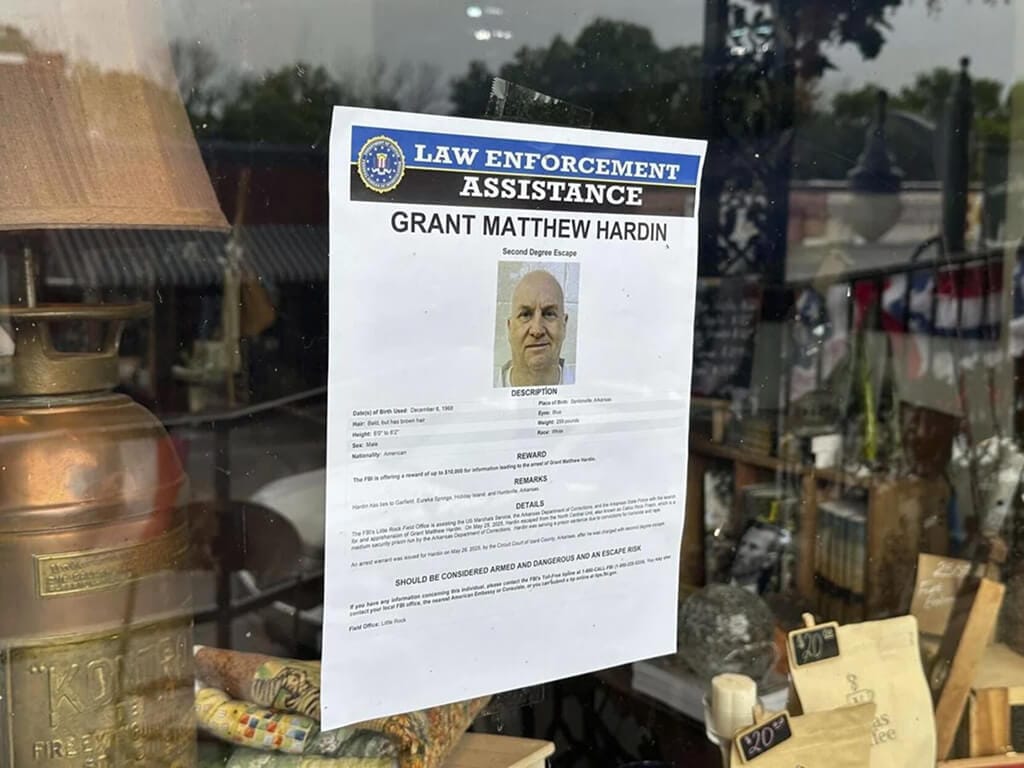State Police Submit Extensive 900 Page Report on Hardin Escape
Lawmakers and corrections officials debate reforms after the Arkansas State Police detailed failures that enabled Grant Hardin’s escape.

Grant Hardin, the devil, is now behind bars. Not in Calico Rock, where he escaped successfully, but in the Varner Supermax prison, 193 miles away. The infamous jailbreak in May, involving a criminal featured in a well-known documentary, drew worldwide attention and caused significant shame for Arkansas authorities. After a 12 day manhunt, Hardin was finally caught and returned to custody. Since then, everyone has wanted to know how he managed to pull it off. Some answers began to emerge in August when an internal committee released its report, outlining several reasons the escape was possible, mostly tied to security failures. Now, the Arkansas State Police have delivered their own findings from the investigation.
Findings From State Police Investigation
The Arkansas State Police report, spanning more than 900 pages, includes detailed interviews with prison employees, supervisors, and others involved in the 12 day manhunt for Grant Hardin. “We looked at the policies of the Arkansas Department of Corrections, specifically regarding escape, and tried to identify any concerns or areas that needed to be addressed,” said Mike McNeill of the ASP Special Investigations Unit.
While much of the Department of Corrections’ internal committee review is reflected in the police report, the ASP report provides additional detail. According to the internal review, Hardin exploited security gaps while performing kitchen duty. He had access to a back dock, where over six months he stashed aprons, painted them black with a marker, and fashioned a disguise convincing enough to fool a tower guard. This allowed him to walk out the front gate undetected.
The new report shows how failures in policies and communication contributed to escape.
McNeill noted that the policy at the North Central Unit had long allowed inmates assigned to cleaning duties to use the back dock without supervision. “The policy that had been at the North Central Unit that had been in place for many years allowed for inmates assigned to cleaning duties to be on the back dock unsupervised,” he said.
ASP found that the policy had officially changed before Hardin’s escape, requiring supervision on the back dock. However, confusion in communicating the new requirements left supervisors uncertain. “When we interviewed the supervisors who attended this meeting, three of them indicated that that was not relayed to them and one of them said that it was,” McNeill explained.
The investigation also revealed breakdowns in communication after Hardin left the unit. Some law enforcement agencies were never properly notified, despite procedures outlined in the unit’s escape plan.
Lawmakers React to Report
The Charitable, Penal, and Correctional Institutions Subcommittee of the Arkansas Legislative Council reviewed the findings of the submitted report on Tuesday, September 23. While the investigation revealed errors ranging from basic employee duties to gaps in policy understanding and communication, lawmakers focused on whether Department of Corrections employees had received sufficient training on who to contact during escape situations. With the report pointing to broader systemic failures, DOC Director Dexter Payne faced scrutiny over his earlier claim that the escape was solely the result of two employees’ actions.
“That’s what strikes me throughout all of this: folks didn’t know what they didn’t know, and usually that comes down to training,” said Sen. Matt McKee, District 6 Republican. “I don’t know if you have any way to explain that, but it doesn’t seem like we’re training folks the way they need to be trained.”
McKee added, “So this is not just about two employees. This is a failure because we didn’t have the training. Because we didn’t have the policies worked out.”
“What I was referring to was the two employees who actually allowed this inmate outside the fence,” Payne responded. McKee countered, “That does not happen without proper training and proper policy.”
Payne acknowledged that broader issues existed, telling Sen. Ben Gilmore, co-chair of the council, “We definitely have some policy issues we have to work through.” Corrections Secretary Lindsay Wallace agreed, emphasizing that her department and prison administrators must address the policy concerns identified by both the state police and the internal review.
The public had raised concerns about how an individual with Hardin’s criminal history was handled in the jail, prompting questions about inmate classification. The Arkansas State Police report highlights inappropriate management during his incarceration, an issue discussed during the legislative meeting.
Rep. Jason Nazarenko, R-Cotter, questioned Wallace on how the department is addressing inmate classification to prevent future errors. Although the classification system is automated, staff still review decisions. The internal report noted that departmental supervisors lacked the authority to discipline unit-level staff who failed to follow guidance.
Chief Legal Counsel Tawnie Hughes told lawmakers she did not know how Hardin’s misclassification occurred. She explained that when she tested the automated system, it produced the correct points that should have placed Hardin in maximum security.
“What we need is another set of human eyes,” Hughes said. “We’re working on a training system that will help.”
The report recommended additional training for classification personnel and more frequent reviews.
Ongoing Oversight
Tuesday’s meeting was the third since June in which the subcommittee heard testimony on Hardin’s escape, the response of prison staff, and the broader implications for corrections leadership in Arkansas. The Arkansas State Police investigation report now provides greater clarity on the incident. However, several committee members noted they had only received the long report the previous day. Once they have reviewed it, the subcommittee indicated that another meeting may be scheduled soon to discuss measures to prevent a similar incident in the future.





